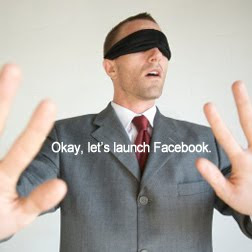
In comparison to other news coverage in the past two years, the declaration of bankruptcy by ACORN, which used to be the largest grassroots community organization of low- and moderate-income people with over 400,000 member families, has been virtually inaudible. After 40 years as a grassroots advocacy organization, the board members voted to close its last chapter on Nov. 2.
The timing could not have been worse, unless it wanted to go out in a whimper. The release was sent out on Election Day.
According to an end of an era post by CEO Bertha Lewis, the reasons were the barrage of unmitigated accusations and extremists increasing their radicalism. I propose something else killed ACORN.
If you live by the sword, you will die by the sword.
Extreme publicity, the very assets that became the advocacy group's weapon of choice, was responsible for its undoing.
In its early beginnings, it could be argued that ACORN was needed as a counterbalance. And, for the decade it focused significant effort on investigating complaints against companies accused of predatory lending practices, it did some tremendous good by supporting the enactment of strict state laws against predatory practices, organizing against foreclosure rescue scams, and steering borrowers toward loan counseling.
Ten years or so ago, it even became a valuable resource for me when one bank attempted bait-and-switch practices, using 9-11 as an excuse to jack up interest rates just prior to closing a second mortgage. The information ACORN provided was critical in writing a brief to various members of Congress, providing early documentation and a case study on predatory refinance and second mortgage schemes. Since, the bank in question (but not all), has moved away from such practices.
However, as ACORN expanded its goals to become a much more far-reaching organization through aggressive demonstrations that aimed to draw negative publicity against issues as opposed to evidence, some of its activities became a hotbed of controversy. In 2003, it was criticized for union busting within its own organization. And in recent years, there were allegations of voter fraud, embezzlement, and unprofessional conduct.
In addition, it became more and more politicized in its support and increasingly walled in its approach to public relations, adopting a posture not unlike some of the more unjust companies it would rally against. Whereas the organization was effective in causing change with extreme publicity, its credibility continually eroded until the federal government had no choice but to distance itself and private donors could no longer support it.
The difference between publicity and public relations could not be more clear.
Crain's New York Business was one of the few publications to mention the bankruptcy as more than a mention. Had the organization invested as much time in crisis communication and public relations while keeping its own values in order, it may have survived some of the various controversies. Publicity does not enhance credibility.
Likewise, it could have remained an advocacy group as opposed to becoming an activist group. Perhaps the various ACORN spinoffs that are now being founded, leaving the debt-ridden organization behind, will do better to understand the difference. Any time an organization begins to focus on feeding the organization as opposed to its original mission to support a specific cause, it is time to close the doors.






















